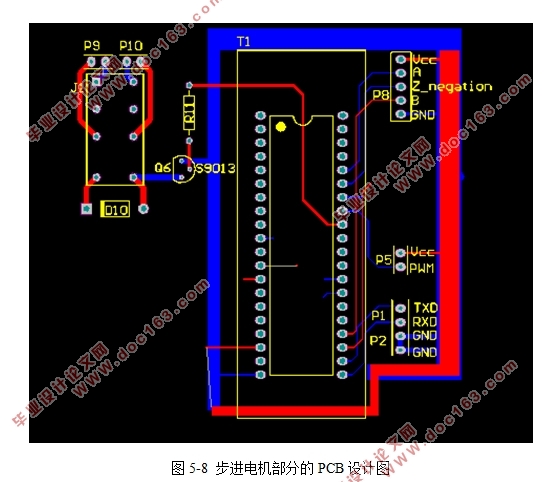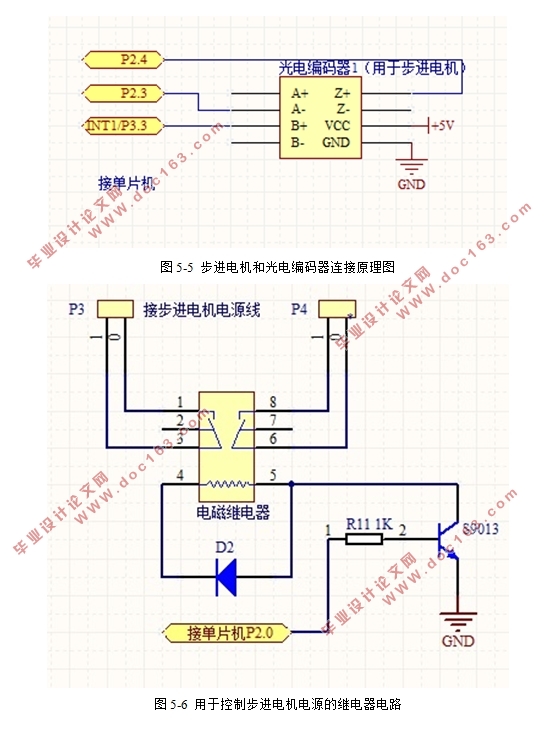基于IAP15W4K58S4单片机的步进电机的控制及应用研究

1.无需注册登录,支付后按照提示操作即可获取该资料.
2.资料以网页介绍的为准,下载后不会有水印.资料仅供学习参考之用.
密 惠 保
基于IAP15W4K58S4单片机的步进电机的控制及应用研究(任务书,开题报告,论文11000字)
摘要
本文根据步进电机及光电编码器的原理及应用,在波尔共振仪上设计出了一种步进电机控制系统,并利用单片机的可编程性和运算功能,根据不同的用途和控制需求,来改变软件程序,灵活的控制步进电机。本文先分析步进电机的原理,将以IAP15W4K58S4单片机为基础的步进电机与各个模块结合,进行硬件电路设计,接着根据应用需求编写关于步进电机的软件程序。我们设计出来的系统控制精度高,运行平稳,在不同种类的控制系统中稳定的实现启动、停止、正反转以及变速等功能。
关键词:步进电机 IAP15W4K58S4单片机波尔共振仪控制电路
Control and Application Research of stepper motor based on IAP15W4K58S4 MCU
Abstract
According to the principle and application of step motor and photoelectric encoder, we have designed a stepper motor control system on the Bohr resonator, and use the programmable and operational functions of the single chip computer to change the software program and control the stepping motor flexibly according to the different uses and control requirements. In this paper, the principle of stepping motor is analyzed, and the step motor based on IAP15W4K58S4 single chip is combined with each module, and the hardware circuit is designed. Then, the software program for stepping motor is compiled according to the application requirements. We have designed the system with high precision, smooth operation, and the functions of starting, stopping, positive and reverse, and variable speed in different kinds of control systems.
Key words: Stepping motor; IAP15W4K58S4 single chip; Bohr resonator; Control circuit.
[资料来源:www.THINK58.com]



目录
摘要 2
Abstract 3
第一章绪论 1
1.1引言 1
1.2研究背景和意义 1
1.3整体设计方案 2
第二章系统硬件设计 5
2.1.1步进电机概述 5 [资料来源:www.THINK58.com]
2.1.2常见的步进电机控制系统 9
2.1.3步进电机的连接原理图 11
2.2单片机模块部分 12
2.2.1单片机的简介 12
2.2.2IAP15W4K58S4的单片机介绍 13
2.3光电编码器模块部分 14
2.3.1光电编码器原理简介 14
2.3.2光电编码器模块电路设计 15
2.4继电器电路模块部分 16
2.4.1继电器工作原理简介 16
2.4.2继电器模块电路设计 17
第三章系统软件设计 19
3.1 PWM相关寄存器定义程序 19
3.2初始化函数 20
3.3PWM频率调节程序(用于调节步进电机转速) 20
3.4电机软启动程序部分 22
3.5外部中断INT1的部分程序 23
第四章应用实例 25
4.1在波尔共振仪中的应用 25
4.1.1仪器的不足之处 25
4.1.2应用步进电机之后的波尔共振仪 26
4.2在数控机床中的应用 27
4.2.1数控机床 27
4.2.2步进电机的控制 28
4.3在汽车仪表中的应用 29
第五章仪器的原理图与PCB 35
5.1仪器的实物图 35
5.2仪器的实验操作图片 35
5.3仪器的原理图 37
5.4仪器的PCB板设计图 39
第六章总结 40
参考文献 41
致谢 42
